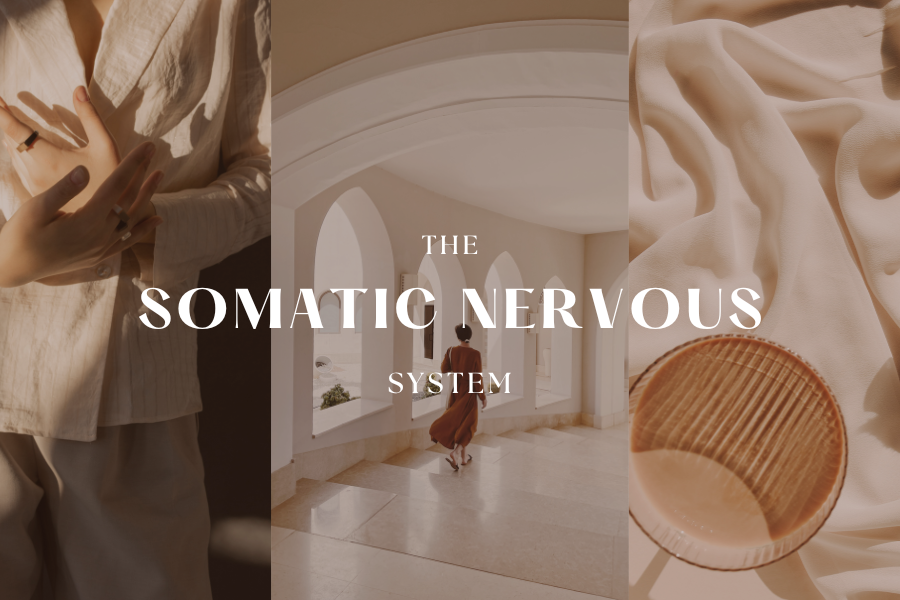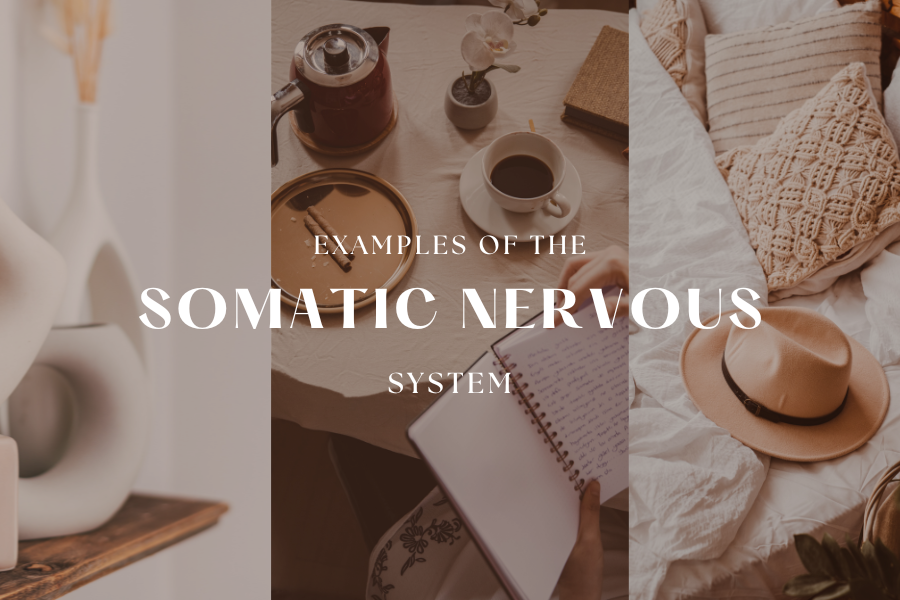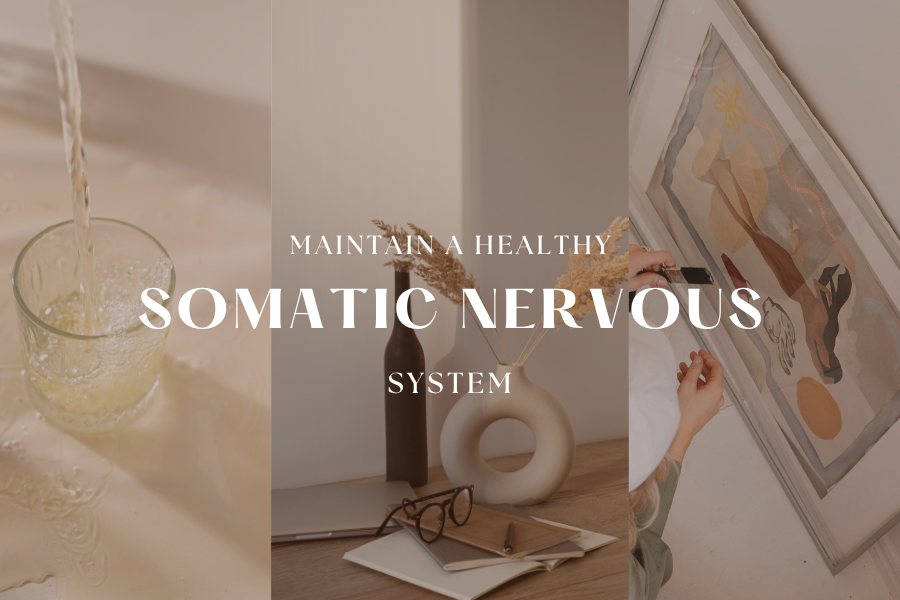Understanding the Somatic Nervous System And Why It’s Important
Are you interested in learning about the somatic nervous system? Today we’ll discuss the different branches, functions, and importance.

The human nervous system is a complex network of specialized cells responsible for transmitting signals throughout the body. It is divided into two main divisions: the central nervous system (CNS) and the peripheral nervous system (PNS).
The central nervous system (CNS) consists of the brain and the spinal cord, which are responsible for processing and integrating information and generating responses. On the other hand, the peripheral nervous system (PNS) includes all the nerves and ganglia located outside the CNS. It serves as a communication network between the CNS and the rest of the body. An extremely important bridge as it allows our bodies to function properly.
The somatic nervous system is a division of the peripheral nervous system (PNS). It encompasses the sensory and motor neurons that connect the body’s sensory receptors, skeletal muscles, and the CNS.
To summarize, the somatic nervous system is part of the peripheral nervous system (PNS), which works in coordination with the central nervous system (CNS) to facilitate voluntary movements and sensory perception.
In this article, we will explore the somatic nervous system, its distinct characteristics, its differences from the autonomic nervous system, examples of the SNS in action, and how to maintain a healthy nervous system.
The Somatic Nervous System
The somatic nervous system (SNS) serves as a crucial link between the central nervous system and the external environment. It facilitates voluntary movements and enables sensory perception. The SNS primarily controls skeletal muscles and relays sensory information from sensory organs (eyes, ears, skin) to the CNS.
Voluntary Control and Involuntary Functions:
Unlike the autonomic nervous system (ANS), which regulates involuntary bodily processes, the somatic nervous system is primarily under voluntary control. It allows individuals to consciously initiate and control movements, such as walking, talking, and writing. This voluntary nature differentiates the SNS from the ANS, which governs automatic functions such as heart rate, digestion, and breathing.
The Two Branches of the Somatic Nervous System:
The SNS can be further categorized into two main divisions: the sensory division (afferent division) and the motor division (efferent division).
- Sensory Division:
The sensory division is responsible for transmitting sensory information from the body’s receptors to the central nervous system. It includes sensory neurons that detect various stimuli, such as touch, temperature, pain, and pressure. These sensory neurons carry the information to the brain and spinal cord, enabling the perception of the external environment. - Motor Division:
The motor division signals from the CNS to the skeletal muscles, enabling voluntary movements. It consists of motor neurons that initiate muscle contractions, allowing us to perform various actions consciously. For instance, when you decide to raise your hand, the motor neurons of the somatic system convey the message from the brain to the relevant muscles, resulting in the desired movement.
Key Differences Between the Somatic Nervous System and the Autonomic Nervous System:

While the somatic and autonomic nervous systems are both part of the peripheral nervous system, they differ in several fundamental aspects:
- Voluntary vs. Involuntary Control: The somatic nervous system is voluntary, allowing conscious control over skeletal muscles, while the autonomic nervous system regulates involuntary functions without conscious effort (our heart beating, breathing, digestion).
- Target Organs: The somatic nervous system controls skeletal muscles exclusively, whereas the autonomic nervous system innervates smooth muscles, cardiac muscles, and glands.
- Neuronal Pathways: In the somatic nervous system, the pathway involves a single neuron, connecting the CNS directly to the target muscle. In contrast, the autonomic nervous system utilizes a two-neuron pathway, with a preganglionic neuron originating from the CNS and a postganglionic neuron connecting to the target organ.
- Subdivisions: The somatic nervous system is divided into the sensory and motor divisions, as explained earlier. On the other hand, the autonomic nervous system is further divided into the sympathetic, parasympathetic, and enteric divisions, each playing distinct roles in regulating bodily functions.
The Importance of the Somatic Nervous System
The somatic nervous system plays a vital role in enabling voluntary movements and sensory perception, making it an essential component of our daily lives. Understanding the importance of the somatic nervous system helps us appreciate its significance in various aspects of human functioning.
- Voluntary Control: The somatic nervous system grants us the ability to consciously control our skeletal muscles, allowing us to perform a wide range of voluntary actions. From walking, running, and grasping objects to complex activities such as playing musical instruments or typing, the somatic system enables us to interact with the world around us in a purposeful manner.
- Sensory Perception: The sensory division of the somatic nervous system relays sensory information from our environment to the central nervous system, enabling us to perceive and respond to stimuli. Through this system, we experience sensations such as touch, temperature, pain, pressure, and proprioception (awareness of body position). These sensory inputs provide us with valuable information about our surroundings, facilitating our interactions and decision-making processes.
- Motor Skills and Coordination: The SNS plays a fundamental role in the development and refinement of motor skills. Through practice and repetition, the somatic system allows us to acquire and improve our abilities to perform specific movements and actions. Whether it’s honing athletic skills, fine-tuning artistic techniques, or mastering complex tasks, the SNS is at the core of skill acquisition and coordination.
- Communication and Expression: The somatic nervous system is crucial for our ability to communicate and express ourselves. From speaking and gesturing to facial expressions and body language, the SNS provides the means for conveying our thoughts, emotions, and intentions to others. It allows us to articulate our ideas through speech and use our bodies to communicate non-verbally, enhancing social interactions and fostering connections with those around us.
- Rehabilitation and Physical Therapy: The somatic system plays a significant role in rehabilitation and physical therapy practices. Individuals who have experienced injuries, neurological conditions, or musculoskeletal disorders often undergo therapies aimed at retraining and restoring function to their somatic system. Physical therapists work closely with patients to improve mobility, strength, and coordination, maximizing the recovery potential of the somatic nervous system.
By understanding the importance of the somatic system, we gain a deeper appreciation for the intricacies of human functioning. Its voluntary nature, sensory perception abilities, contribution to motor skills and coordination, role in communication, and relevance in rehabilitation highlight its indispensable role in our everyday lives. The SNS allows us to navigate the world, interact with others, and express ourselves, making it a remarkable gateway to our physical and sensory experiences.
Somatic nervous system examples:

Here are some examples of the SNS in action:
- Voluntary Movements: Any voluntary movement you make involves the somatic nervous system. For instance, when you decide to walk, run, jump, dance, or engage in any physical activity consciously, the somatic system controls the skeletal muscles required for those movements.
- Sensory Perception: The somatic nervous system enables you to perceive and respond to various sensory stimuli. When you touch something hot and quickly retract your hand, it’s the somatic nervous system that carries the sensory information from your skin receptors to the CNS, allowing you to react to the potentially harmful stimulus.
- Reflex Actions: Reflex actions involve the rapid, involuntary response of the body to a stimulus. Although reflexes are often associated with the autonomic nervous system, some reflexes rely on the somatic nervous system. For example, the knee-jerk reflex, also known as the patellar reflex, occurs when the doctor taps your knee with a reflex hammer, causing your leg to automatically jerk forward due to the activation of the somatic nervous system.
- Fine Motor Skills: The SNS is responsible for precise, coordinated movements of smaller muscles, known as fine motor skills. Examples include writing with a pen or pencil, playing a musical instrument, typing on a keyboard, painting, sewing, or any activity that requires delicate and precise movements of the fingers, hands, and wrists.
- Speaking and Facial Expressions: When you speak, the somatic system controls the muscles involved in producing speech, such as the muscles of the tongue, lips, and vocal cords. Additionally, the somatic system governs the facial muscles responsible for facial expressions, allowing you to convey emotions through smiles, frowns, or other facial gestures.
- Posture and Balance: The somatic nervous system plays a role in maintaining posture and balance. It controls the muscles responsible for keeping you upright and stabilizes your body during movements, such as walking or standing.
These examples illustrate the involvement of the SNS in a wide range of voluntary movements, sensory perception, reflex actions, fine motor skills, speech, facial expressions, and maintaining posture and balance. This particular branch allows us to interact with our environment, express ourselves, and engage in purposeful actions.
How to maintain a healthy SNS:

Keeping the somatic system healthy involves maintaining overall well-being and promoting optimal function of the peripheral nervous system. Here are some strategies to support the health of your somatic nervous system:
- Regular Exercise: Engaging in regular physical exercise has numerous benefits. Exercise promotes blood circulation, enhances oxygen and nutrient supply to nerves and muscles, and helps maintain muscle strength and coordination. Activities such as walking, jogging, dancing, and strength training can positively impact the health of your somatic nervous system.
- Balanced Diet: Providing your body with proper nutrition is essential for nerve function. Include a variety of fruits, vegetables, whole grains, lean proteins, and healthy fats in your diet. Nutrients such as B vitamins, omega-3 fatty acids, and antioxidants found in foods like leafy greens, fish, nuts, and seeds can support nerve health.
- Adequate Sleep: Getting sufficient sleep is crucial for overall nervous system health, including the SNS. Aim for 7-9 hours of quality sleep each night to promote restoration and rejuvenation of your nervous system.
- Stress Management: Chronic stress can have negative effects on the nervous system. Engage in stress-reducing activities such as meditation, deep breathing exercises, yoga, or hobbies that help you relax and unwind. Finding healthy ways to manage stress can support the overall health of your somatic system.
- Avoid Toxins: Certain substances can adversely affect nerve health. Limit or avoid the consumption of alcohol and tobacco products, as they can damage nerves over time. Additionally, take precautions to prevent exposure to toxic chemicals or substances that can harm nerve tissue.
- Regular Check-ups: Maintain regular visits with your healthcare provider to monitor your overall health and address any concerns related to your somatic system. They can conduct examinations, evaluate nerve function, and provide appropriate guidance for maintaining or improving nerve health.
- Protect Against Injuries: Take precautions to prevent injuries that can impact your somatic system. Wear protective gear when engaging in sports or activities with a risk of physical harm. Follow safety guidelines and ergonomics to reduce the risk of repetitive strain injuries or accidents that can affect nerves and muscles.
- Mental Stimulation: Engaging in activities that challenge your cognitive abilities can support overall nervous system health. Reading, puzzles, learning new skills, and engaging in mentally stimulating tasks help maintain neural connections and promote brain health, indirectly benefiting the somatic system.
Remember, maintaining a healthy lifestyle that encompasses overall well-being is key to supporting the health of your somatic nervous system. By adopting these habits, you can optimize nerve function, promote motor skills, and enhance sensory perception, contributing to a healthy and thriving somatic nervous system.
Conclusion:
The somatic nervous system plays a vital role in enabling voluntary movements and sensory perception. With its sensory and motor divisions, it forms a direct link between the central nervous system and skeletal muscles. Unlike the autonomic nervous system, the SNS allows conscious control over our actions. Understanding the differences between these two systems enhances our knowledge of how our bodies function, highlighting the intricacies of the human nervous system as a whole.





